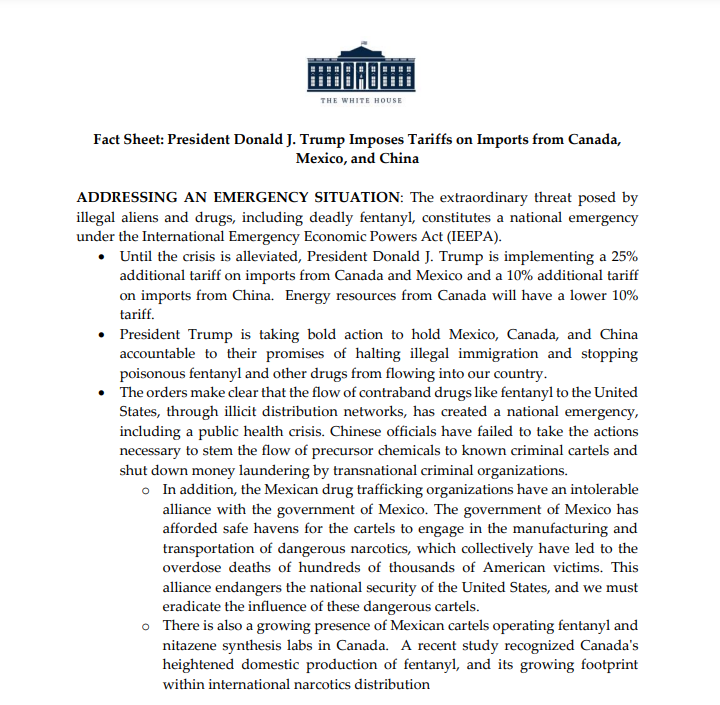Trump’s Victory: Navigating New Tariffs and Preparing for the Future of Global Trade
The return of Donald Trump to the presidency marks a pivotal shift in global trade and manufacturing strategies. Businesses worldwide are bracing for an intensified focus on protectionist policies, trade barriers, and tariffs reminiscent of those during Trump’s first term. Understanding the history, analyzing current trends, and preparing for what lies ahead is critical for companies looking to safeguard their supply chains and remain competitive in a turbulent economic landscape.
1. Revisiting Trump’s First Term: A Tariff-Laden Era
Trump’s first term from 2017 to 2021 was defined by a bold and confrontational approach to trade, aimed at addressing perceived imbalances and reinforcing his “America First” agenda. The U.S.-China trade war, initiated under his leadership, fundamentally shifted the way businesses operate globally.
Key Highlights from Trump’s Previous Tariff Strategy:
- The U.S.-China Trade War: The most notable aspect of Trump’s trade policy was his direct confrontation with China, which resulted in tariffs on more than $360 billion worth of imports. The rationale included allegations of unfair trade practices, forced technology transfers, and intellectual property theft. This move disrupted supply chains globally, forcing companies to rethink their sourcing and manufacturing strategies.
- Steel and Aluminum Tariffs (2018): Trump imposed tariffs of 25% on steel and 10% on aluminum imports, citing national security concerns. This policy affected not only China but also key allies, straining relationships with Canada, the European Union, and Mexico. The ripple effect led to increased production costs for U.S. industries that relied on these materials, including automotive, aerospace, and construction sectors.
- Widespread Impact on Consumer Goods: Electronics, textiles, furniture, and countless other products were subject to tariffs. For companies like Apple and major U.S. retailers, these policies meant either absorbing the increased costs or passing them on to consumers, contributing to price hikes and inflationary pressures.
The Business Response: Many companies scrambled to find alternative production locations, diversifying their supply chains to Southeast Asian nations like Vietnam, Malaysia, and Indonesia. While some larger corporations managed to adapt, small and medium-sized businesses struggled with the higher operational costs and the logistical complexity of shifting production.
2. The Biden Administration: Different Leader, Similar Challenges
When President Joe Biden took office, many in the business world anticipated a significant easing of Trump’s trade policies. However, Biden’s administration largely maintained the status quo, signaling that U.S.-China tensions and protectionist measures were not solely Trump’s agenda but part of a broader, bipartisan strategy.
Examples of Biden’s Trade Policies:
- Continuation of Key Tariffs: While Biden sought to mend relationships with U.S. allies, he upheld many tariffs on Chinese goods. This stance underscored a bipartisan agreement that countering China’s economic practices was necessary for protecting American interests.
- Solar Panel Tariffs: To support the growth of domestic solar manufacturing, Biden extended tariffs on imported solar panels, a policy that originated under Trump. While this helped U.S. solar producers, it also led to higher costs for renewable energy projects.
- Export Controls on Technology: Perhaps the most notable development under Biden was the implementation of strict export controls on advanced technologies, particularly semiconductor chips. This move aimed to limit China’s access to critical technologies and prevent advancements in military and strategic sectors.
Impact on Businesses: Companies with supply chains deeply integrated with China had to manage ongoing tariff costs while navigating export restrictions that affected both sourcing and product development. The continuity between Trump and Biden's trade policies emphasized that U.S. efforts to decouple from China's economic influence are here to stay.
3. Trump’s Return: What’s Next for Global Trade?
With Trump back in office, businesses should prepare for an escalation of protectionist measures. Drawing from his previous term, we can anticipate several potential actions:
Expected Policies:
- Increased Tariffs on Chinese Goods: Trump’s administration is likely to increase existing tariffs, potentially raising duties on products already affected and expanding to new categories. Industries that rely on electronic components, machinery, and textiles should brace for cost increases.
- Broader Trade Restrictions: Beyond China, Trump may look to impose tariffs or trade measures against other major trade partners in Asia and beyond, aiming to prevent the circumvention of U.S. trade policies.
- Focus on Key Industries: Tariffs may target industries deemed vital for U.S. national security, such as pharmaceuticals, rare earth materials, and emerging technologies like artificial intelligence and quantum computing.
4. Strategic Solutions: The Multi-Hub Manufacturing Approach
Given these potential changes, companies need to adopt strategies that build resilience into their supply chains. A multi-hub manufacturing approach is a proven method for navigating complex trade environments.
Why Multi-Hub Manufacturing Works:
- Risk Diversification: Spreading production across multiple countries helps minimize the impact of tariffs and trade restrictions on any single region.
- Cost Management: By diversifying operations, businesses can better manage costs and avoid the significant financial impact of sudden policy shifts.
- On-the-Ground Expertise: Working with local teams ensures that operations remain efficient and compliant with regional regulations, regardless of political changes.
5. Real-Life Example: Navigating Tariffs in Action
Consider a major U.S. apparel company that previously sourced 80% of its products from China. During Trump’s first term, the company faced a 25% tariff on its imports, significantly affecting its bottom line. By adopting a multi-hub strategy and diversifying production to Vietnam and Bangladesh, the company reduced its exposure to U.S.-China trade tensions, balanced costs, and maintained production quality. This move not only protected the company from further tariffs but also positioned it competitively when Biden’s administration maintained many of Trump’s measures.
6. Steps for Businesses to Take Now
With Trump back in office, now is the time for businesses to proactively safeguard their operations:
- Audit Supply Chains: Identify potential tariff vulnerabilities and explore alternative manufacturing hubs to mitigate risks.
- Strengthen Supplier Networks: Building relationships with reliable suppliers across multiple regions can ensure flexibility and continuity.
- Leverage Local Teams: Partnering with on-the-ground experts can help maintain quality and ensure that production adapts quickly to new regulations.
Conclusion
Trump’s victory signals a significant shift back to a more aggressive stance on global trade. His track record, combined with the continued trade tensions maintained under Biden, points to an era where tariffs and strategic trade policies will play a central role. Businesses that prepare now by diversifying their supply chains, engaging local teams, and adopting a multi-hub approach will be best positioned to thrive amid these challenges.
At Asia Agent, we provide the expertise and local support needed to help businesses navigate this complex landscape. By adopting a strategic approach to manufacturing and supply chain management, companies can build the resilience necessary to face new tariffs and succeed in an ever-evolving global market.




